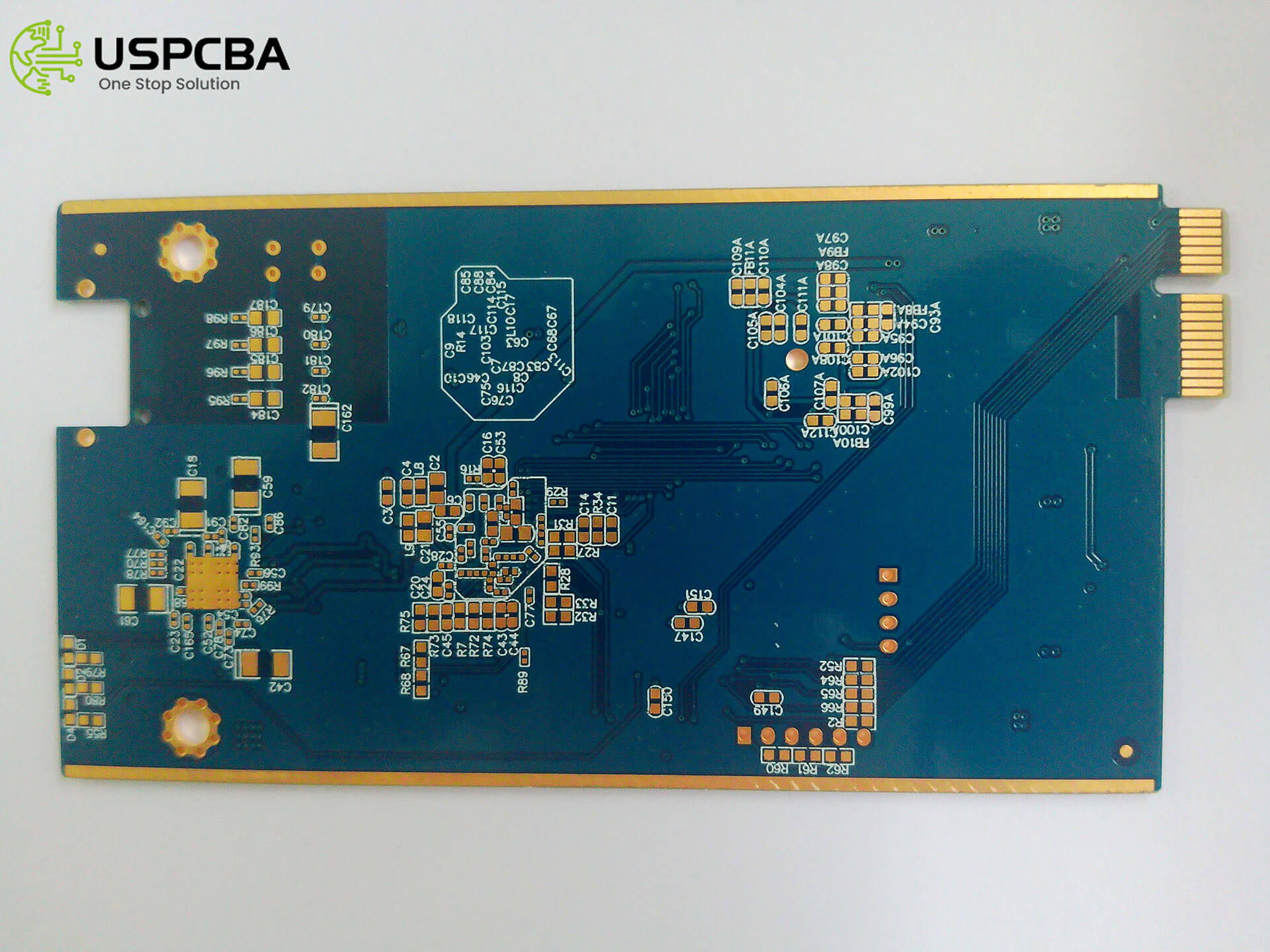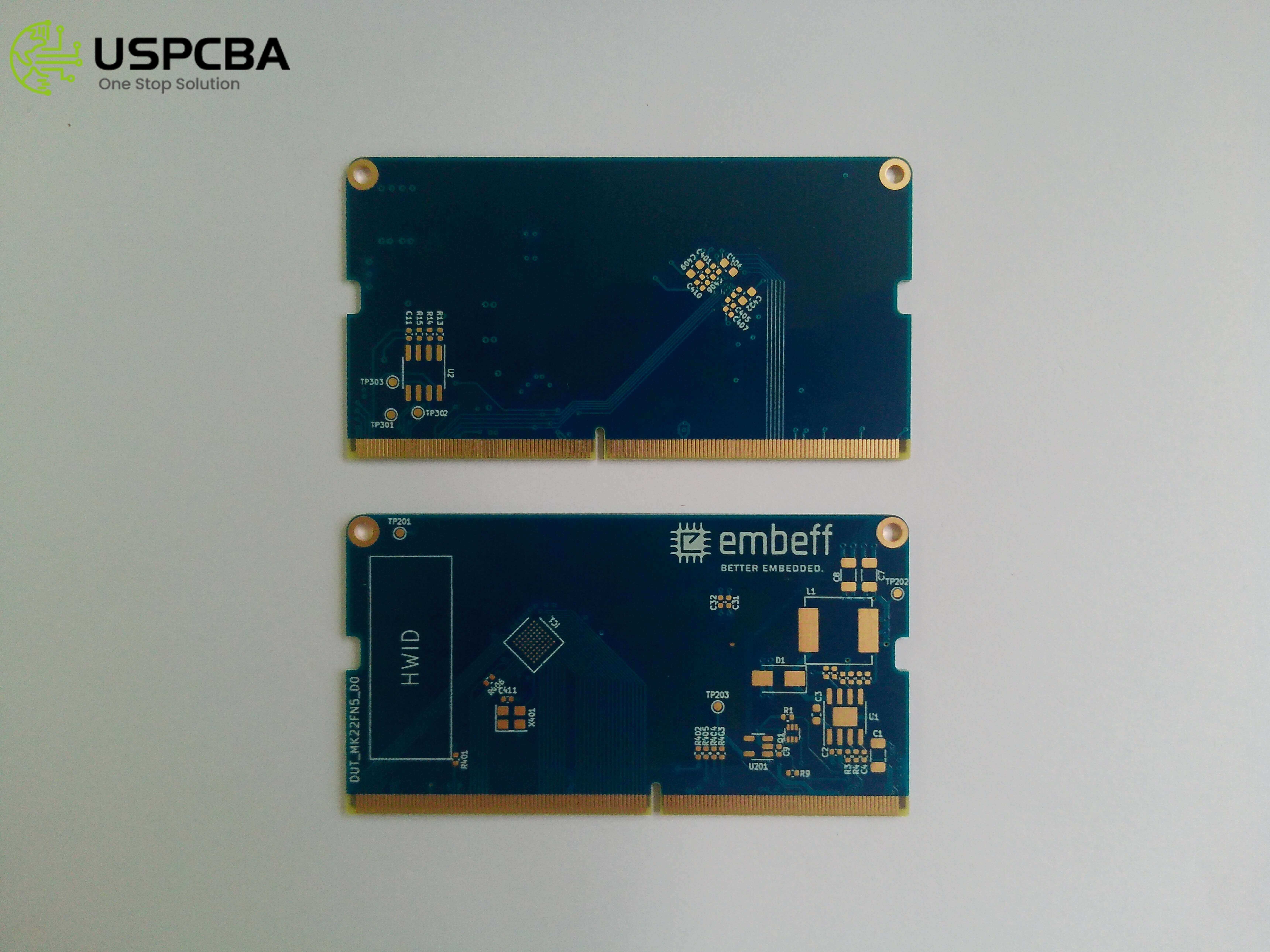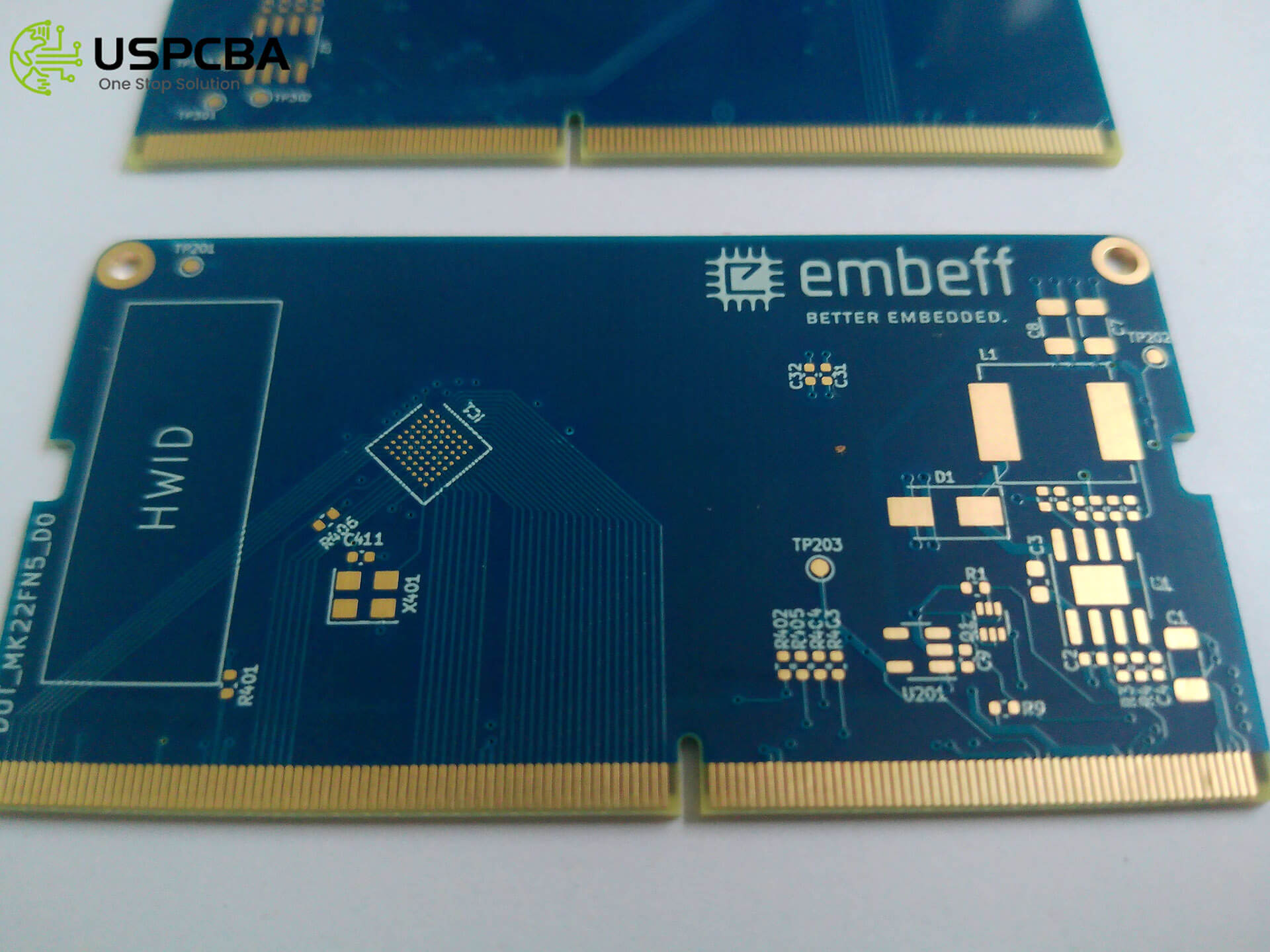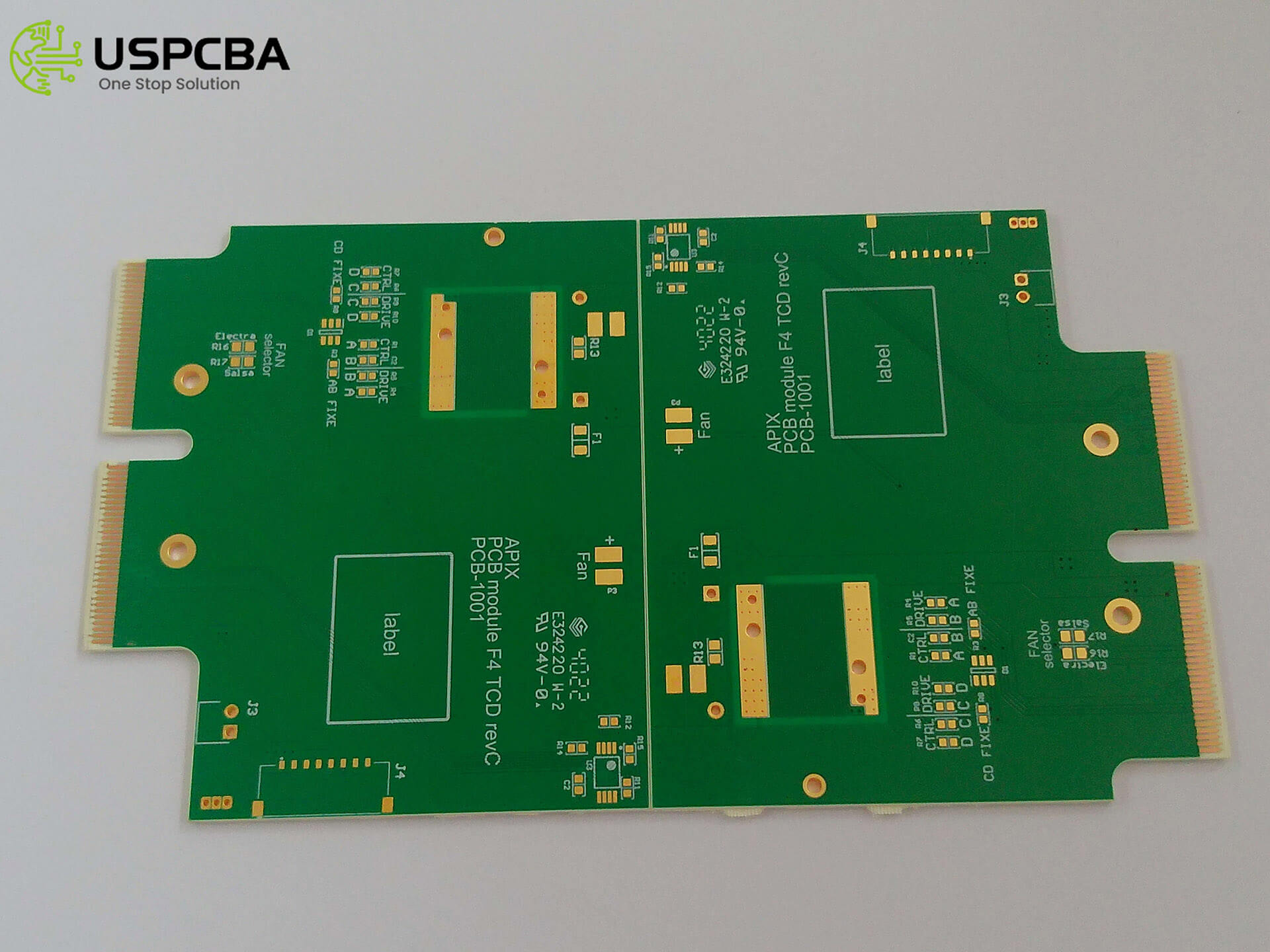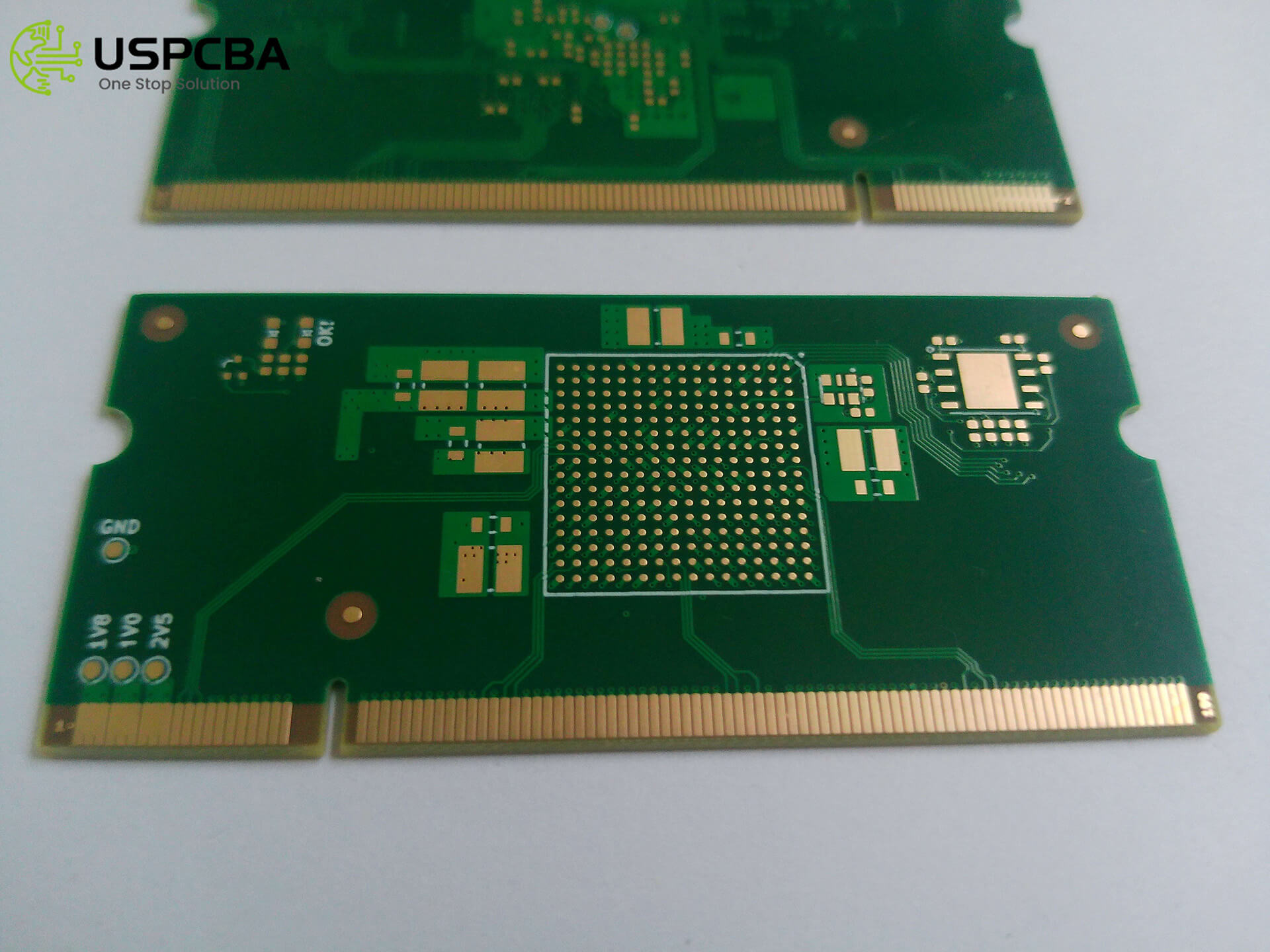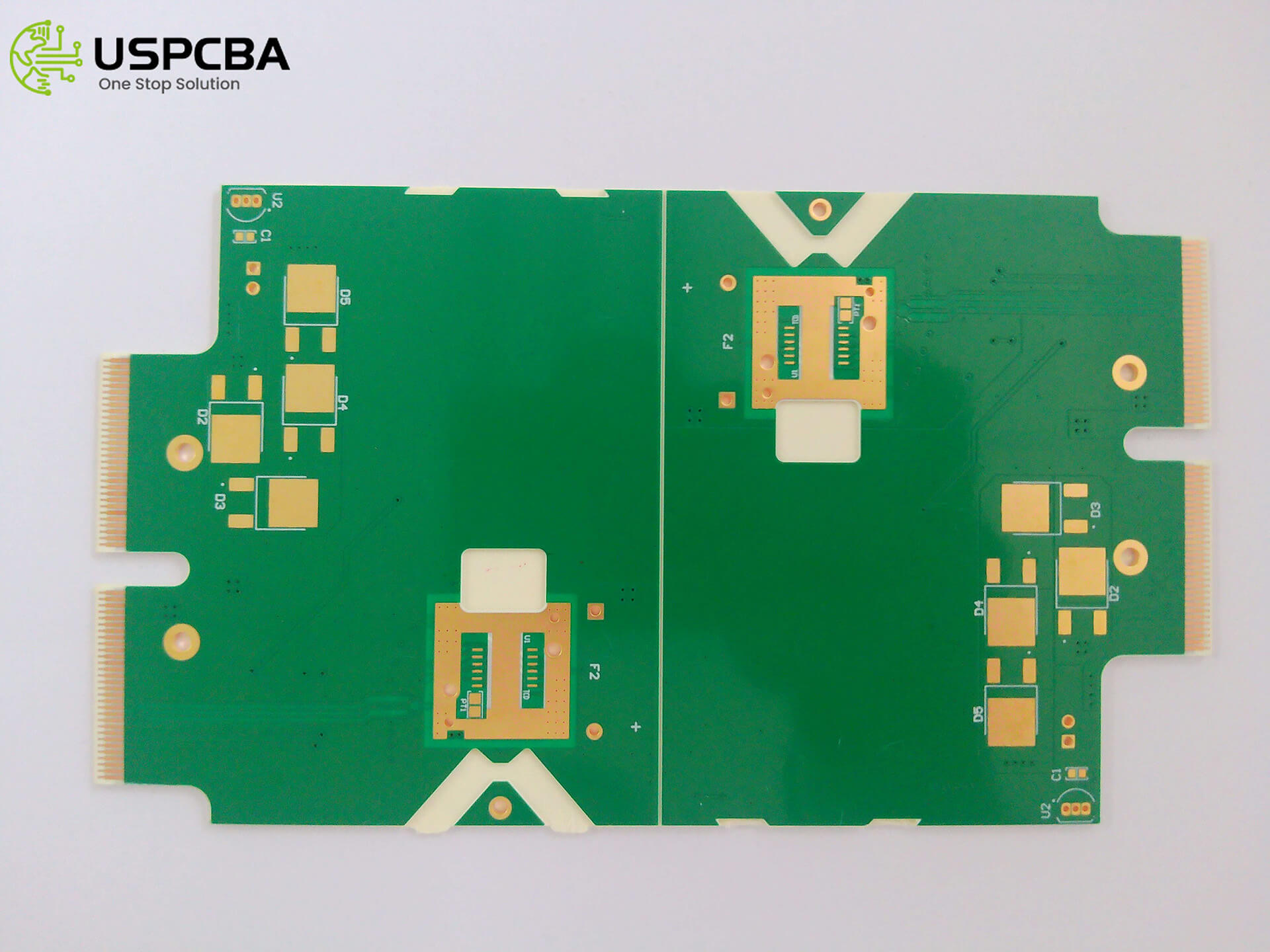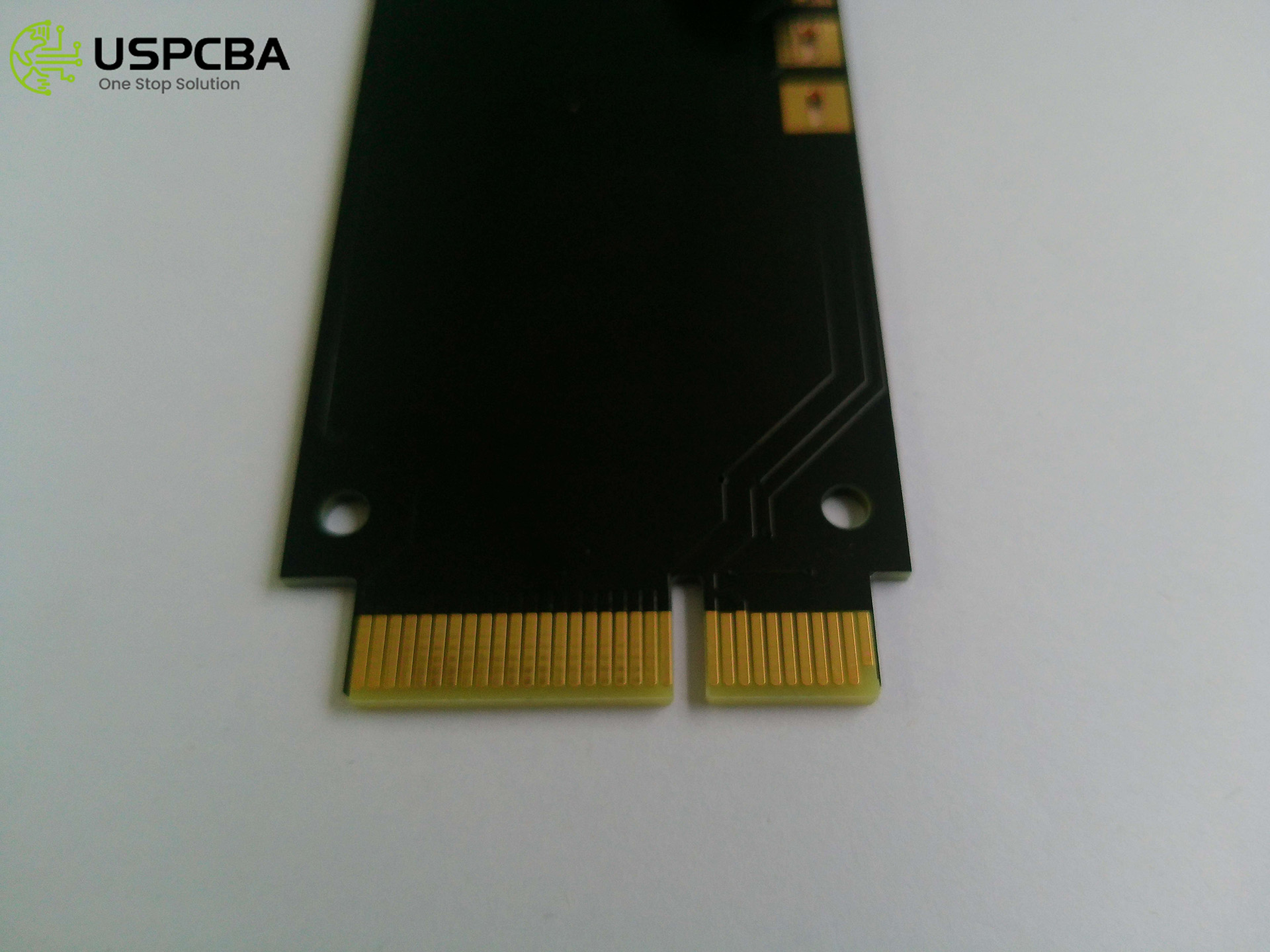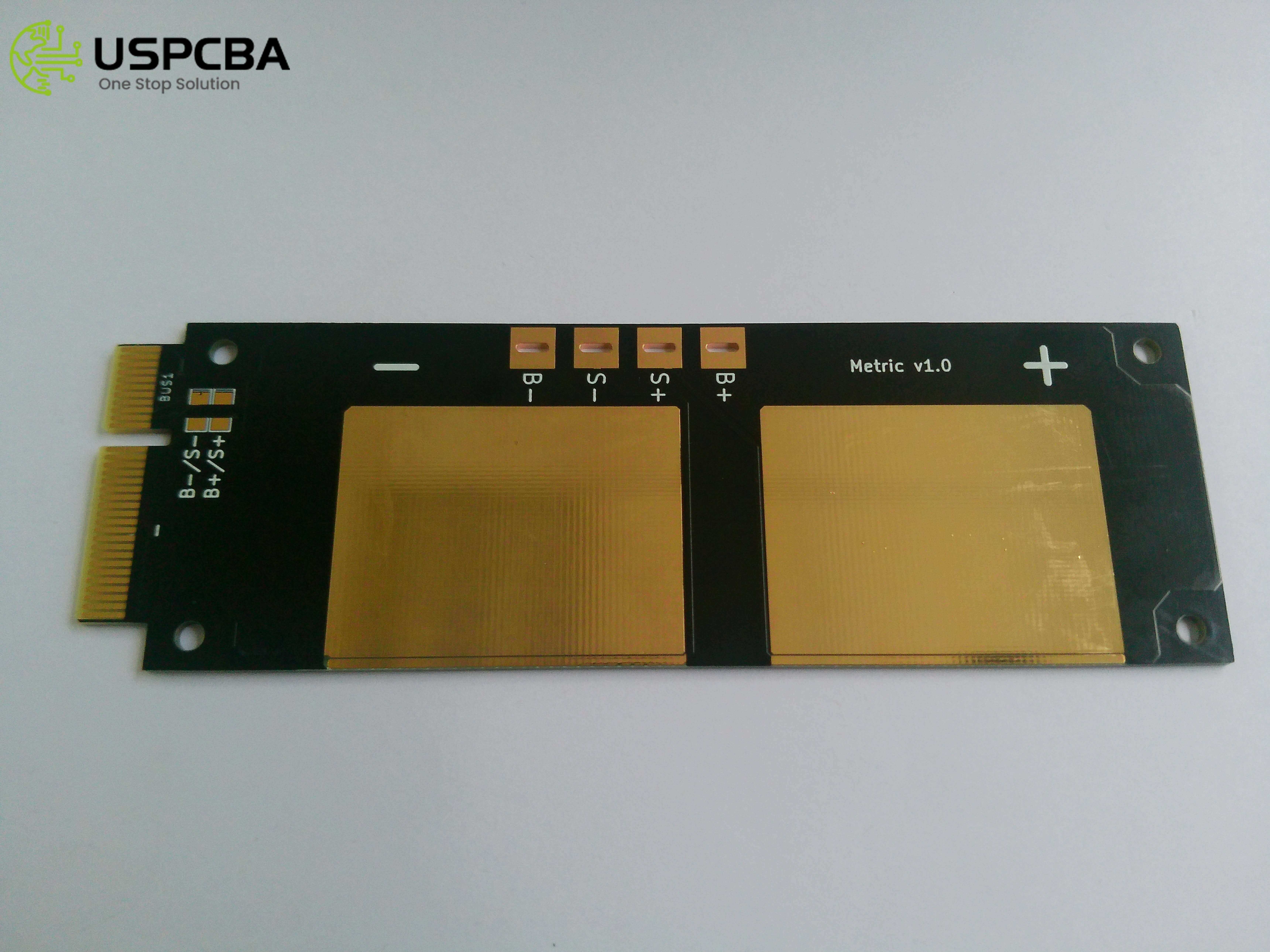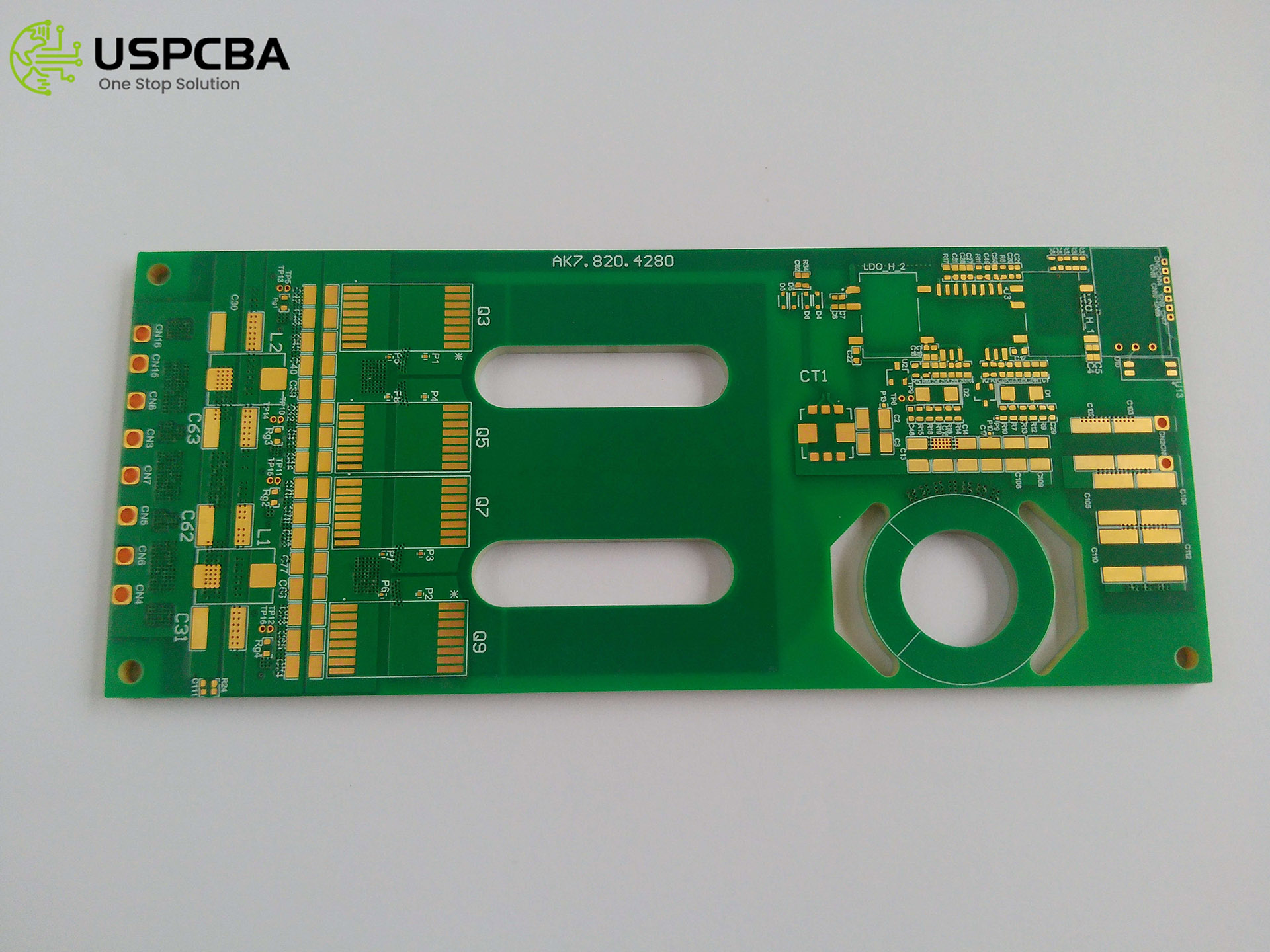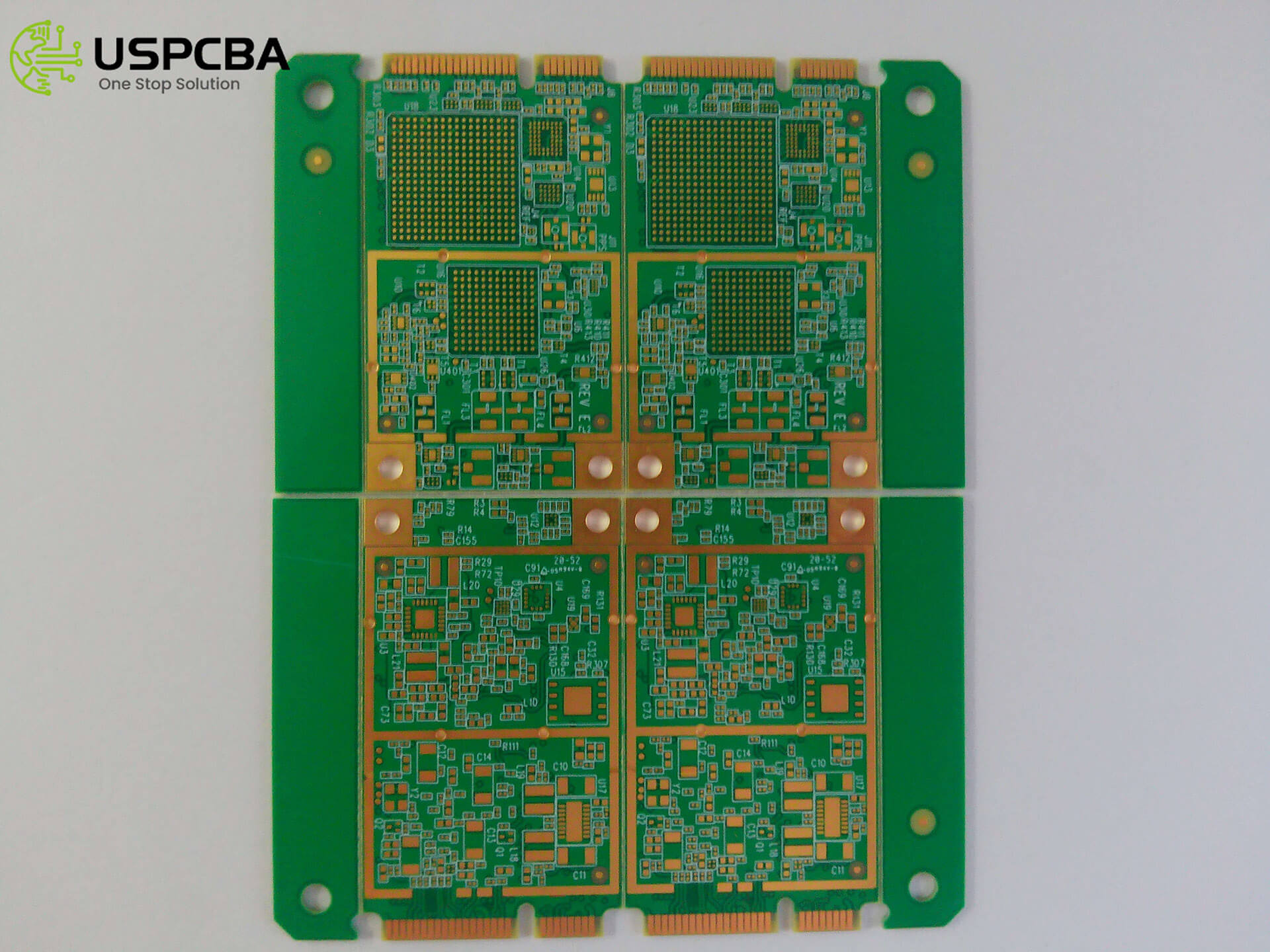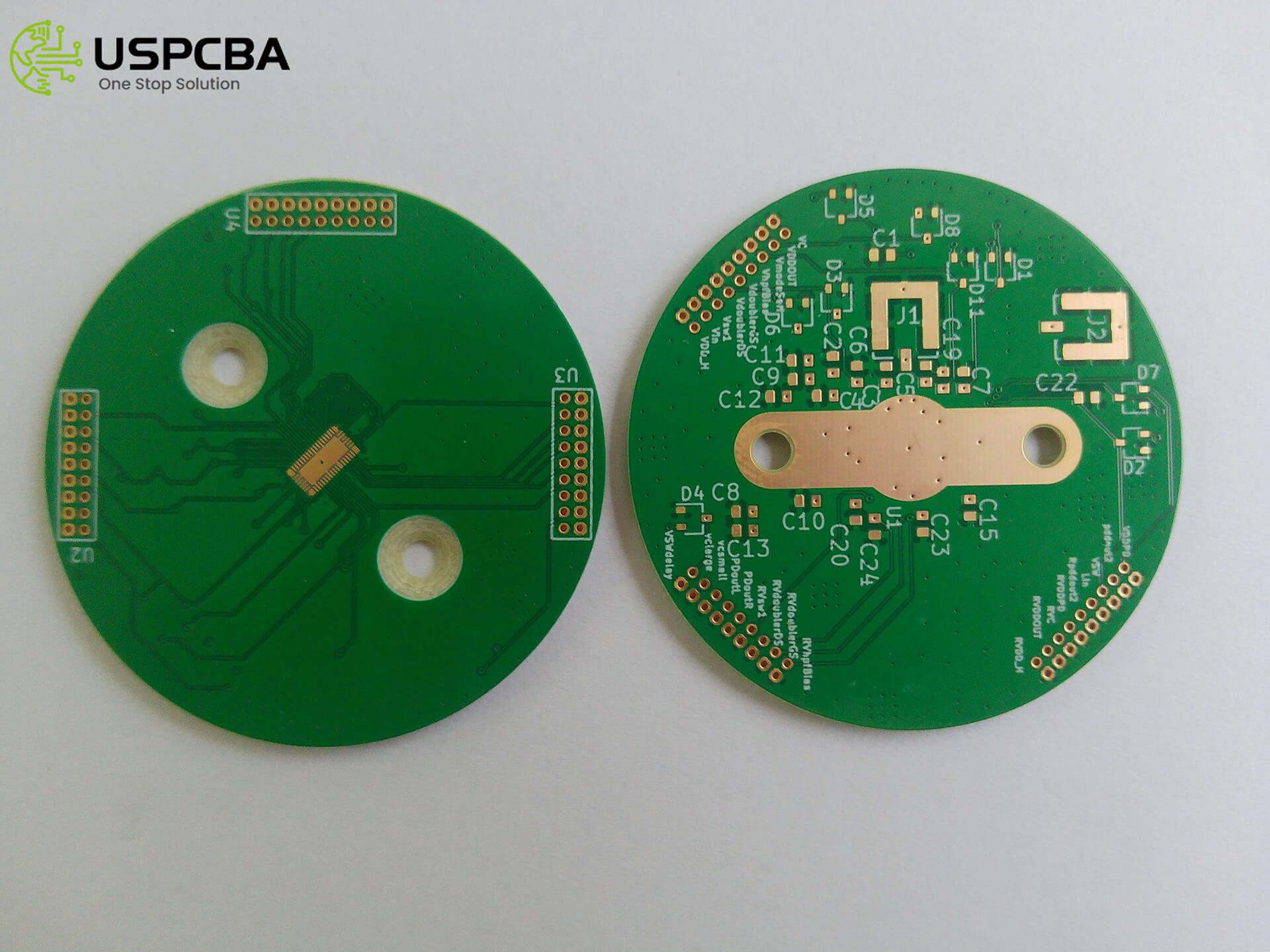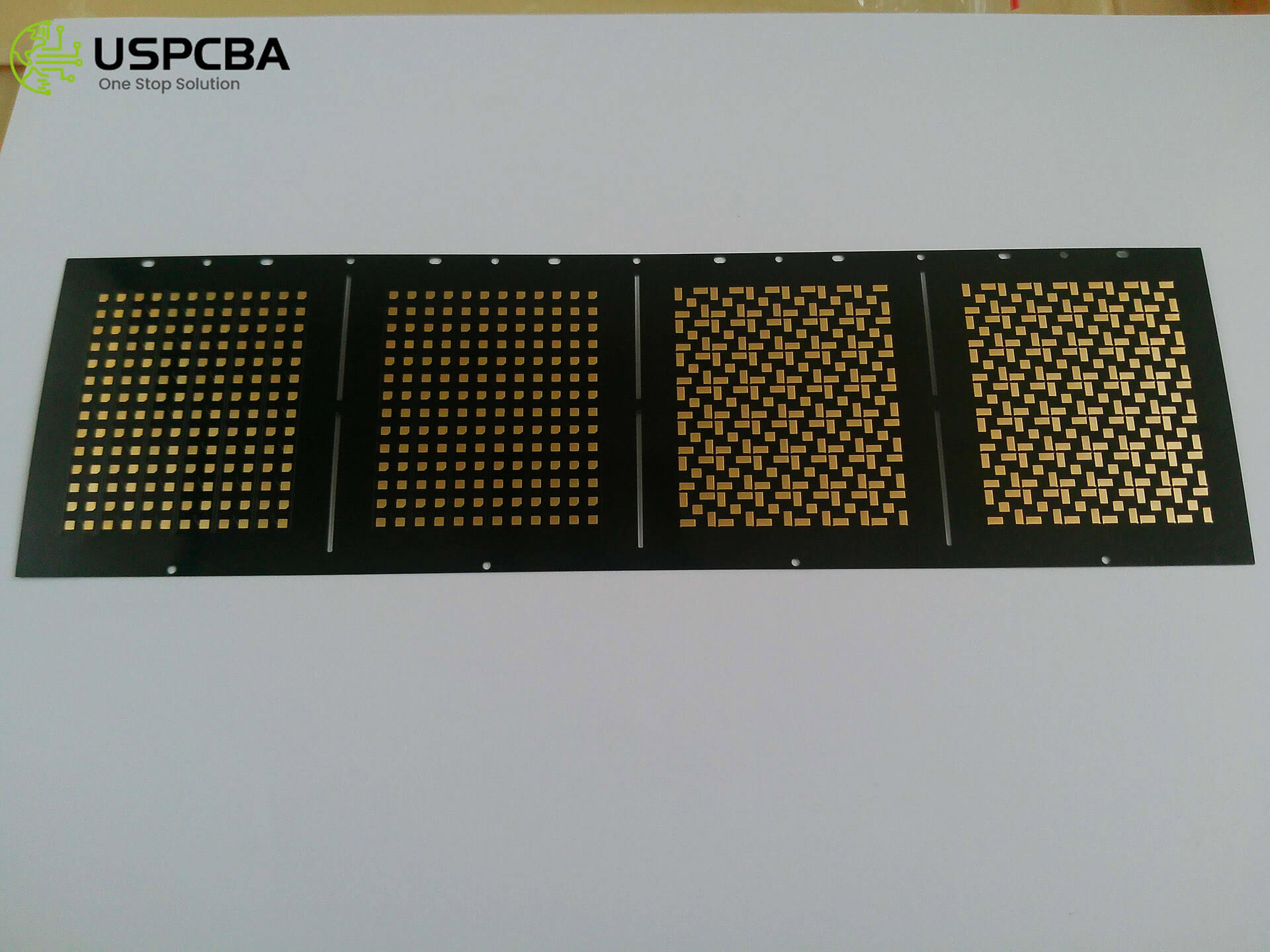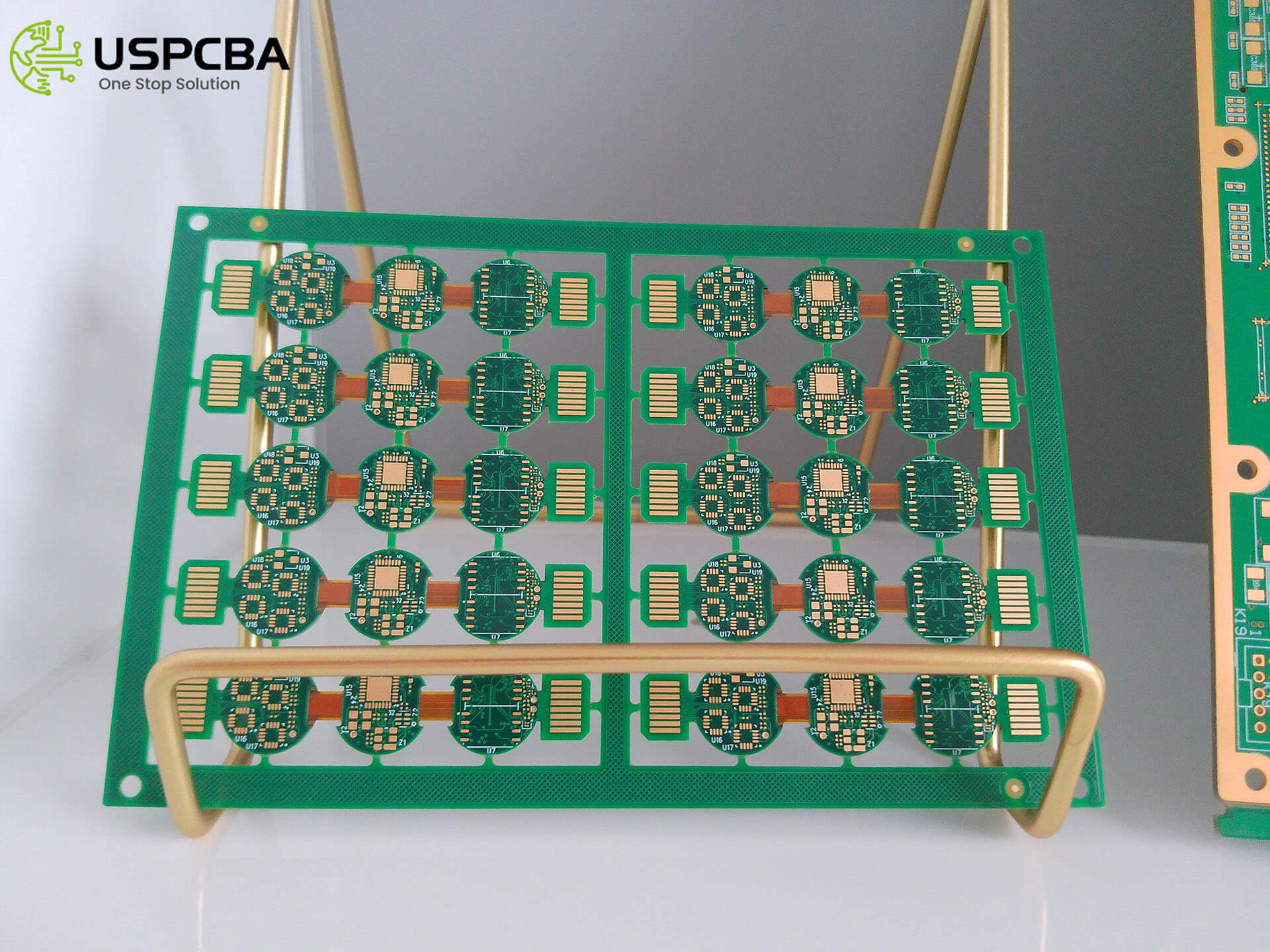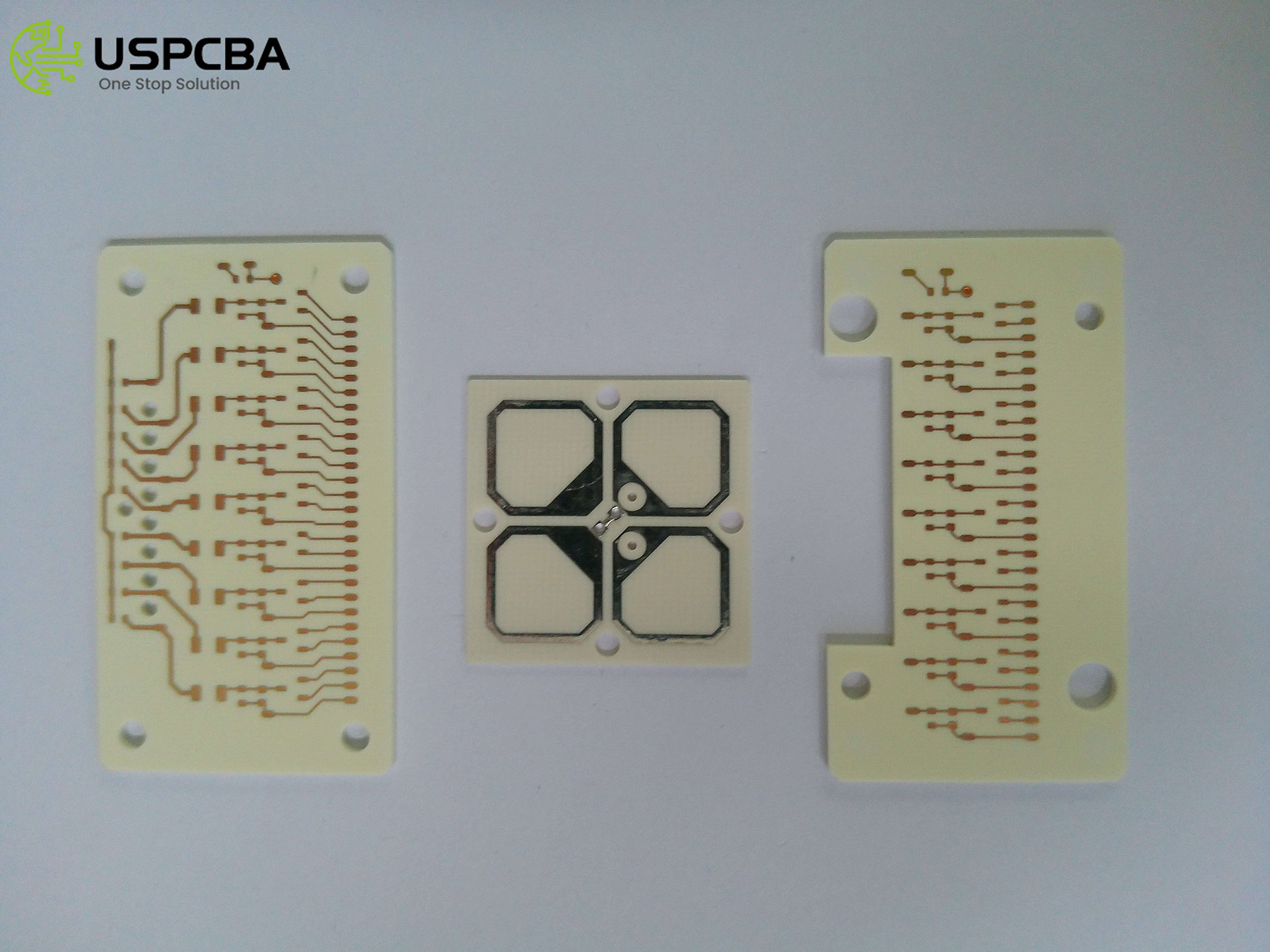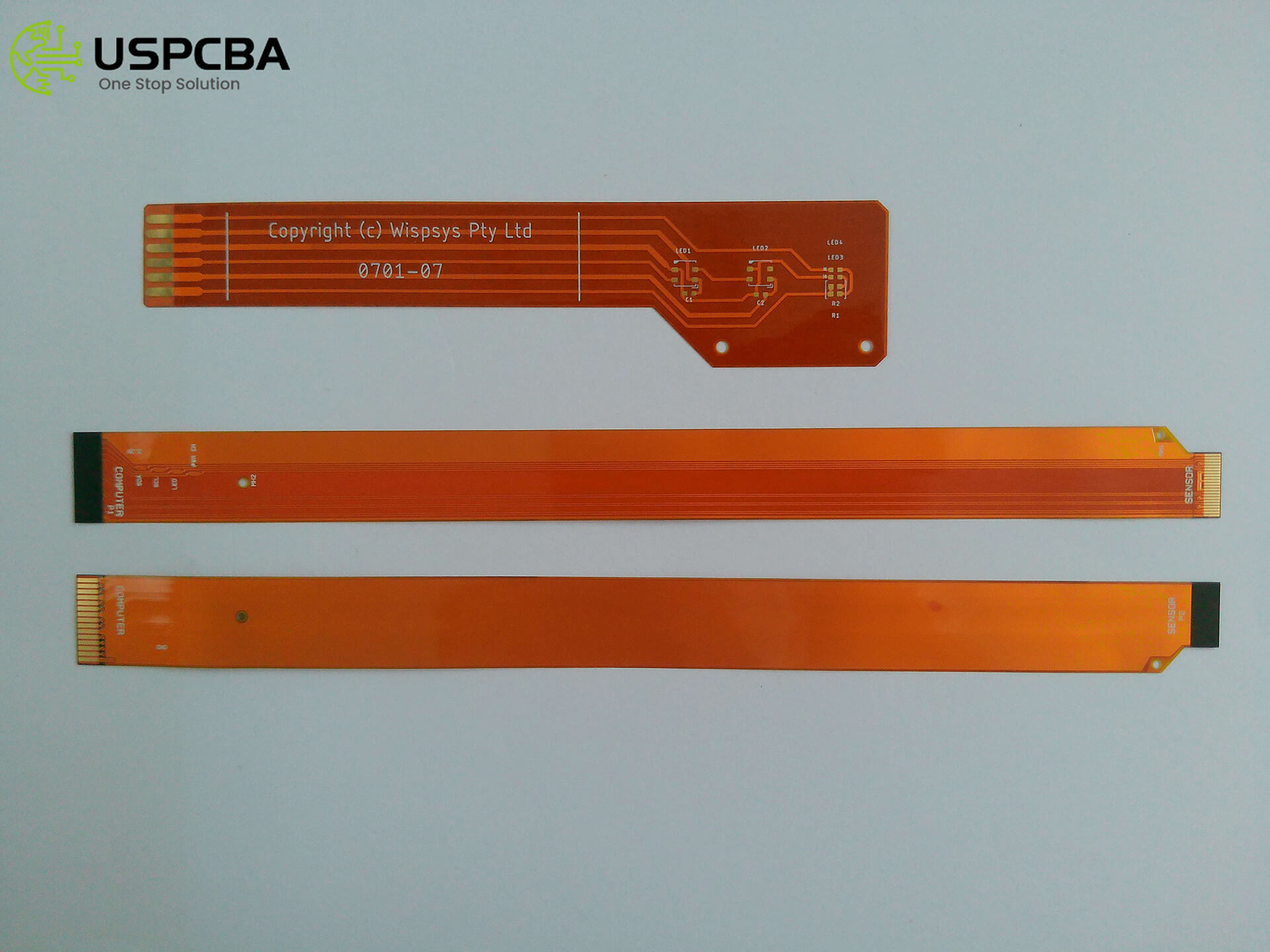Glod Finger PCB
If the power density in the electronic product is higher and the heat will interfere with the heat heat sink or other parts of the product, then the High TG PCB is the best solution.
Application: Consumer electronics field
Characteristic: Min. width/space: 4/4mil, Aspect ratio:12:1
Material: FR4, 94V-0, RoHS
PCB Layer: 6 Layers
Thickness: 1.6mm
Copper thickness: 1oz - 2oz
Surface finished: Immersion gold (2u")
Solder Mask: Green
IPC Standard: IPC 600 Class 2 & Class 3
Testing: AOI Inspection & 100% E-test
